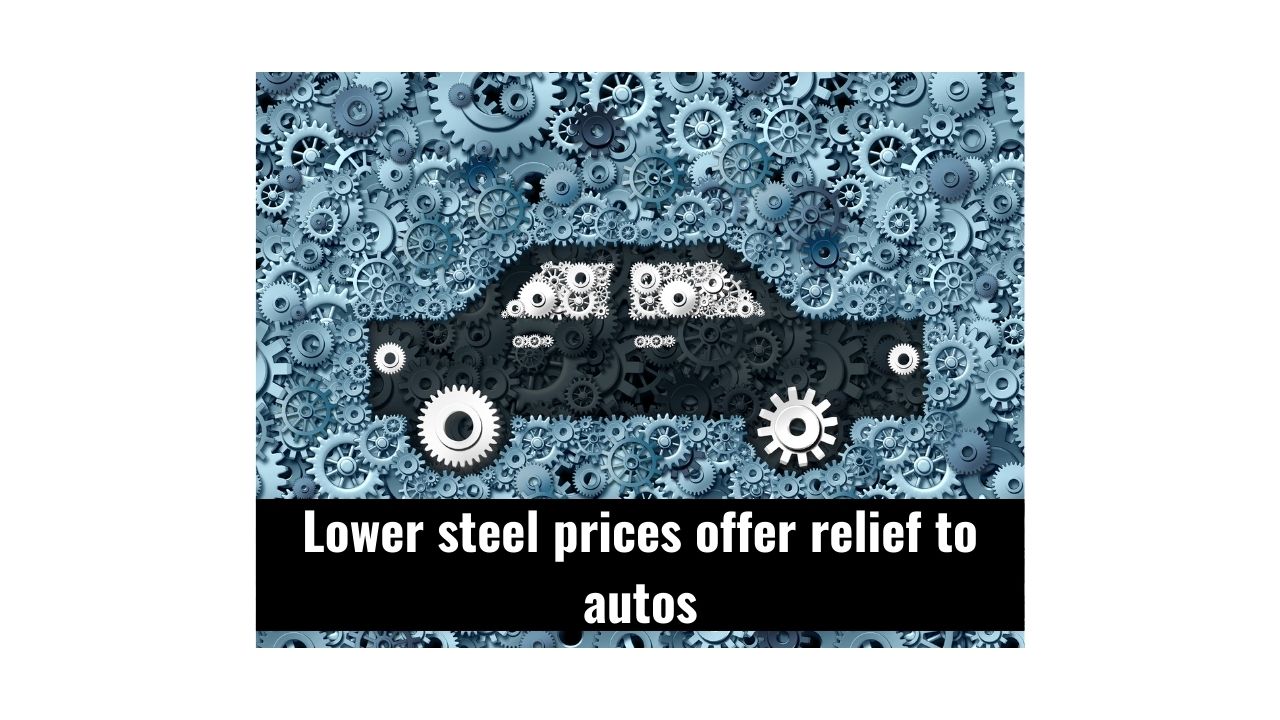Lower steel prices lend a helping hand to automobiles

Last Updated: 16th June 2022 - 10:46 am
Falling steel prices in the last few weeks may not be great news for the steel companies but auto companies are literally making hay as their input costs have come down sharply. From the highs of April 2022, the price of steel is down nearly 20%.
In fact, in the first week of June 2022 itself, the price of steel fell by a hefty 8.95%. The big beneficiary has been the auto sector as the lower commodity costs are starting to reflect in financials of auto companies. It will happen with a lag, but the impact is showing in stock prices.
The first trigger for the fall in steel prices was that the global prices of steel have been falling, The second, and perhaps the more important reason, for the fall in steel prices was the government levied export duty on steel effective 22 May.
This combined with lower import duties on steel inputs, including coking coal led to a sharp fall in price of steel. That is directly benefiting the auto industry, which is one of the biggest users of steel, apart from other sectors like construction, real estate, heavy engineering and white goods.
One has to only at the domestic price of hot rolled coils (HRC) in the first week of June to get a picture. The price of HRC fell by 8.95% From Rs.69,300 per tonne to Rs.63,100 per tonne for the week ended on June 08th.
If you take a slightly longer perspective, the price of steel is actually down by 20% from the peaks of April 2022. But, how exactly does the price of steel impact the price of automobiles and consequently, how does it impact the operating and gross margins of automobile companies?
Start Investing in 5 mins*
Get Benefits worth 5100* | Rs.20 Flat Per Order | 0% Brokerage
Let us look at how much a fall of 20% in steel prices (as has been the fall from the April peak) translate into auto margins. As per estimates, for every 1% fall in steel price the improvement in gross margin is about 20 basis points on an average across various classes of automobiles ranging from two-wheeler to HCVs.
Therefore, a 20% drop would translate into a 4-5% improvement in operating margins of the auto companies. If you combine it with the fall in prices of aluminium and other inputs, autos stand to gain a good deal.
This would be a big relief for the auto companies. In FY22, the impact was quite severe. For instance, Mahindra & Mahindra reported a 300 bps contraction in EBITDA margins in the fiscal year ended FY22.
Now, a lot of that operating margin loss should be recouped with the sharp fall in the price of steel. However, the margins are likely to improve more in Q2FY23 than in Q1FY23. After all, steel constitutes nearly 70% of its raw material basket.
A lot of things are falling in place for the auto sector. Firstly, the input costs are falling and that has been adequately discussed about. Secondly, there is a lot of replacement demand coming from the ecommerce segment and that is a big positive.
Thirdly, the semiconductor shortage is finally getting addressed and it is hoped that in the next 2 quarters, things should almost be back to normal as far as auto demand and output is concerned. And a good kharif would also mean good demand for two wheelers and entry level vehicles.
The good news is that HRC prices are still way above the levels last seen in 2021 so there is further scope for input cost reduction in the auto sector. That should come as a breather for the auto space.
Trending on 5paisa
05
 5paisa Research Team
5paisa Research Team
Discover more of what matters to you.
Disclaimer: Investment in securities market are subject to market risks, read all the related documents carefully before investing. For detailed disclaimer please Click here.

